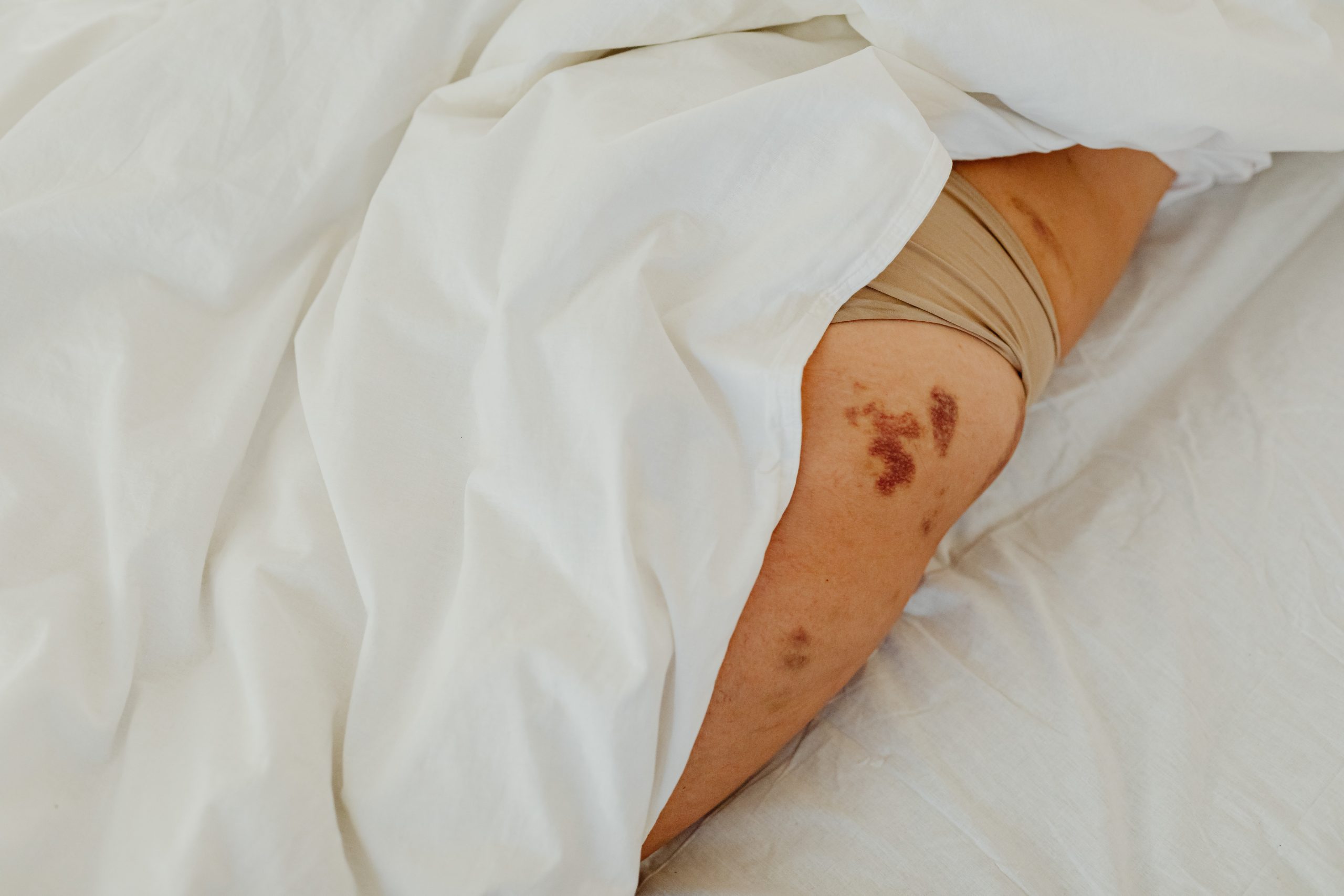Liposuction is a cosmetic surgery that removes excess and unwanted body fat using specific instruments. The recovery time depends on the patient and on which body part did the surgery happen.
Liposuction is the least invasive. Hence it’s a safe procedure. But on some occasions, it can lead to fibrosis. This article describes fibrosis, what happens if you get fibrosis after liposuction, how to prevent it, and the remedies.
If you are someone who thinks they may have Fibrosis, make sure to read it till the end!
What is Fibrosis?
Fibrosis occurs when wound healing becomes excessive and interferes with the natural functions of an organ.
After any injury, connective tissues deposit as a natural healing process. It becomes fibrotic scarring when these connective tissues replace the normal parenchymal tissue and interfere with or inhibit the organ’s functions.
It remodels the parenchymal tissues with excessive fibrous tissue deposition leading to scarring and thickening of the affected tissue. The pathological condition occurs in people with chronic inflammation and repeated injuries.
What causes Fibrosis after Lipo?
Liposuction involves Cannula (a small tube) insertion under the skin to remove fat deposits. The laser tip of the Cannula can damage blood vessels, lymphatic vessels, and soft tissues leading to scarring under the skin. During fat suctioning via the Cannula, tissues become separated.
This process leads to high swelling. Sometimes due to patients not following post-op instructions and sometimes for other reasons, the bulge is not kept at a minimum. This excessive swelling leads to the development of fibrotic scar tissue and chronic inflammation.
Symptoms of Fibrosis after Lipo
You might get Fibrosis after Liposuction if you have the following symptoms:
- Muscle pain in the treated area after three weeks of surgery. The pain goes away temporarily and comes back.
- Lumps and bumps are seen one month after the surgery. Patients not wearing the recommended compression garments after the operation can develop lumps and hard knots. Incorrectly fitting compression clothing or retracting scar tissue that pulls tissue inward can also cause irregular contours and wavy dips.
- Red spots persisting on the skin or increasing in number even after a month of surgery can be a symptom of fibrosis after lipo.
Other symptoms include:
- Loss of light touch sensation or numbness
- Hard and thickened skin of scar tissue
- When attempting to stretch or move, you feel a tug
What are the risk factors of Fibrosis after Liposuction?
The risk factors of fibrosis after lipo are:
- Genetics: Your genetics determines how prone you are to fibrosis. If you are prone to it, even a small cut can result in fibrosis.
- Size of the Scar: Big scars have more possibility of developing fibrous tissues.
- Not enough Movement: You need to move every hour for at least 5 minutes after surgery to prevent the development of Fibrosis. Sitting for too long is a risk factor. You can start exercising if the doctor permits.
- Improper Garments: Wearing tight compression garments or not following instructions for wearing proper compression garments can also lead to fibrosis.
How to avoid Fibrosis after Liposuction?
The best way to prevent any abnormality after surgery is by listening to your surgeon. Swelling will occur. It’s normal because it usually subsides after a month.
Wearing compression garments correctly also reduces fibrosis after lipo by decreasing swelling and preventing fluid accumulation near the incision. Taking daily walks helps too.
Lymphatic drainage massages are the best for canceling fluid accumulation as it pumps the fluid back to the lymphatic vessels. It also reduces swelling and bruising and softens the scar tissues. Patients also try dry brushing, a self-care technique.
You should immediately start massage sessions after surgery to prevent the collagen from drying.
You can take Vitamin A and C supplements or eat food rich in these two vitamins to facilitate faster internal healing.
Vitamin A :
- Controls the stratum corneum’s metabolism for cell regeneration (the stratum corneum is the epidermis’s outer layer)
- Improves the skin by making it softer and suppler.
- Produces collagen
Vitamin C:
- Grow tissues.
- Repair and maintains cells, cartilage, bones, and teeth.
- Produces a protein to make skin, blood vessels, ligaments, and tendons.
- Heal wounds and form scar tissue.
How to fix Fibrosis after Lipo?
Fibrosis after liposuction’s treatment varies depending on how long has passed since the surgery. If you take care of the incision in the first few weeks after the surgery, there is a low chance of developing Fibrosis.
- During the first 1-3 Weeks
In the initial phase, treatment should be gentle. It can progressively get stronger with time. Your focus should be on healing the tissues and reducing swelling, pain and oedema.
- You can take mild lymphatic drainage massage sessions by hand or with electro-lymphatic drainage equipment. From the second to third week onwards, you can take a bit stronger massage sessions but it should be within your comfort levels.
- A good cream with actives like Asiatic acid, madecassic acid, asiaticoside, EGCG, esculin, etc can combat inflammation, oedema and Fibrosis.
- 3-8 Weeks after the Surgery
This time has the highest chance of developing adhesions, fibrosis, and hard lumps. If you didn’t take care of the treated area properly in the first three weeks then now is the time to prevent it.
- Treatment becomes stronger. You can use vigorous lymphatic drainage massages during this period. It will soften the hard lumps, stop adhesion by separating skin stuck on underlying tissues, and reduce fluid retention.
- You can further remove adhesions by stretching and moving around.
- The surgeon may prescribe a magnetic resonance if you have Fibrosis in organs or unreachable places.
- You can also use Pressotherapy and good creams.
- From Week 8 and Onwards
If recovery is correct, most people get cured. Their symptoms reduce by eight weeks. After 8 weeks, when the swelling and bruises lessen, you can focus on skin loosening and cellulite. Excess fat removal makes the skin becomes loose and soggy.
- You can do a radiofrequency or an ultrasound cavitation treatment to tighten your skin.
Does Fibrosis after Lipo go away?
Whether you get fibrosis after liposuction depends on various factors like genes, scar size, and how efficient the recovery is. Some patients barely get any fibrosis even if they don’t undergo any post-lipo treatment.
In most cases, fibrosis persists up to 2 years after surgery. The incision area is sensitive to massage.
In rare cases, there can be permanent fibrosis in some areas. Few people are sensitive to massage for up to 10 years if some tissue damage occurs during the operation.
When to See a Doctor?
If the Fibrosis symptoms persist even after a month, you should consult your surgeon. They will suggest you a treatment depending on the severity of the fibrosis.
Conclusion
If you are planning for liposuction surgery, consult a certified and experienced plastic surgeon to prevent any injuries during the surgery and any avert post-surgery problems. Experienced surgeons will explain the surgery procedures, recovery, and the risks involved. If you understand the post-surgery recovery process, you can prepare for it beforehand. Check out our blog to know more.




